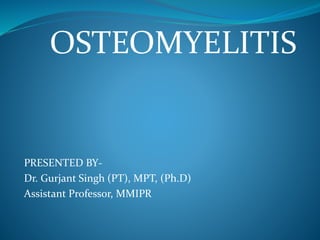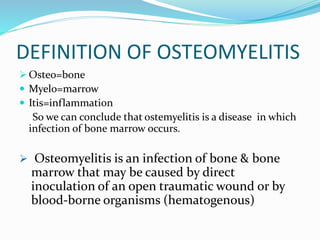Osteomyelitis is an infection of bone and bone marrow, classified by duration (acute, sub-acute, chronic) and route of infection (hematogenous, direct, or contiguous). The infection can arise from various microorganisms, especially Staphylococcus aureus, leading to symptoms such as pain, fever, and localized swelling. Management includes antibiotics, surgical intervention for abscesses, and supportive care involving rest and elevation of the affected area.













































